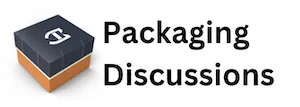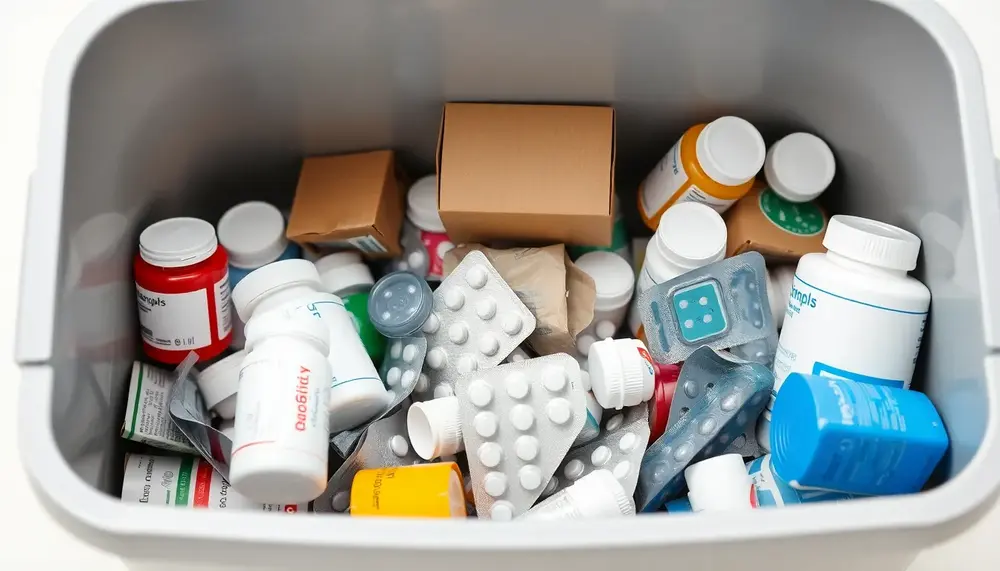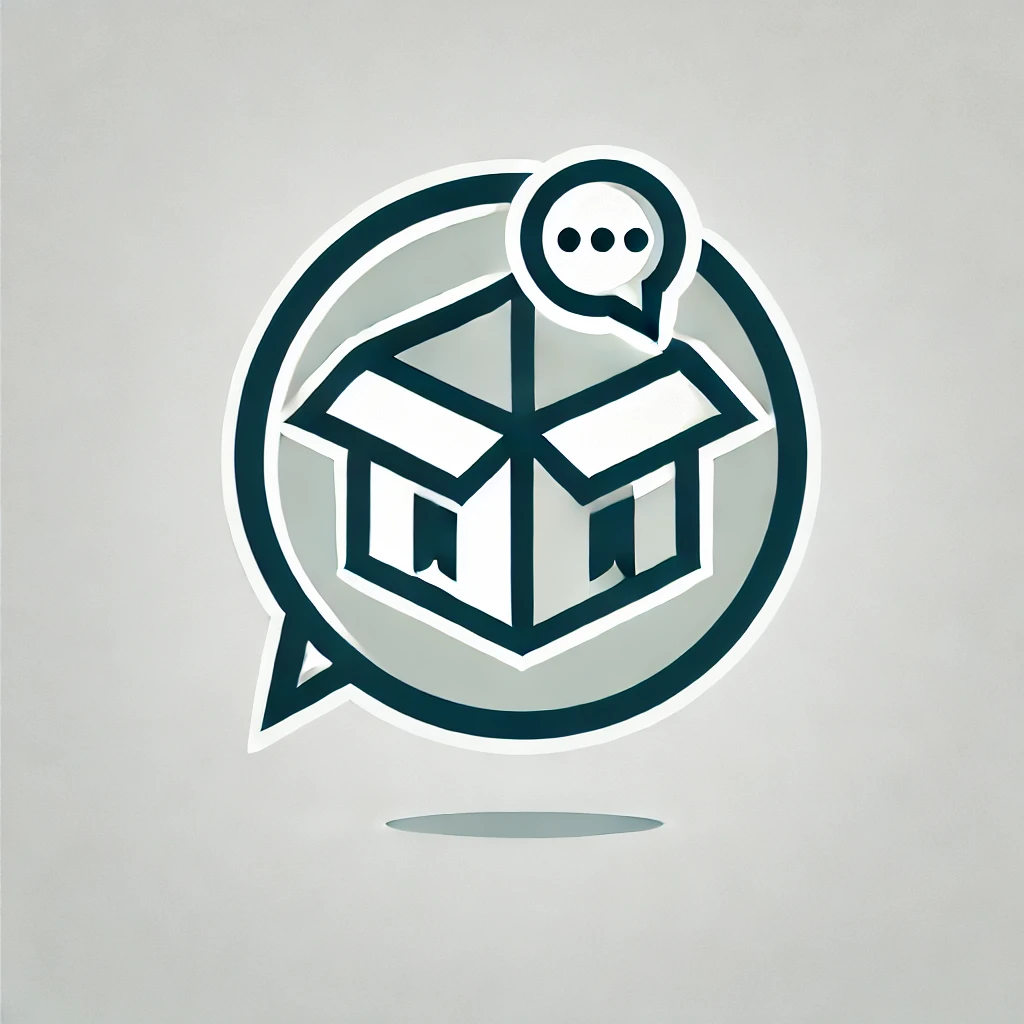Table of Contents:
Why Proper Recycling of Medicine Packaging Matters
Why Proper Recycling of Medicine Packaging Matters
Let’s get straight to the point: medicine packaging is not just another piece of trash. It’s a complex mix of materials—think foil, plastic, glass, and paper—each with its own recycling quirks. Tossing it all in the bin without a second thought? That’s a shortcut to environmental headaches and missed opportunities for resource recovery.
When you recycle medicine packaging correctly, you’re doing more than just “being green.” You’re preventing hazardous residues from seeping into soil and water, which can actually disrupt ecosystems and, honestly, even come back to haunt us through contaminated food or water supplies. Not a pleasant thought, right?
There’s also a safety angle that’s often overlooked. Unrecycled packaging, especially if it contains traces of potent medicines, can pose risks to waste handlers, curious kids, or even pets. Proper recycling ensures these materials are neutralized or processed in a way that keeps everyone out of harm’s way.
On top of that, every bit of packaging that’s recycled means less demand for virgin materials. That translates to fewer forests felled, less energy guzzled, and a smaller carbon footprint. In a world scrambling to slow down climate change, these little steps really do add up.
And here’s something people rarely mention: when you recycle medicine packaging the right way, you’re sending a signal to manufacturers and policymakers. It’s a nudge—hey, we care about sustainable design and expect better recycling systems. That kind of feedback can actually drive innovation in packaging, making future recycling even easier.
So, the next time you’re about to toss that empty pill bottle or crumpled blister pack, remember: your action is a link in a much bigger chain. Proper recycling isn’t just a chore—it’s a direct investment in public health, environmental protection, and a smarter, more sustainable future.
Types of Medicine Packaging and Their Recycling Paths
Types of Medicine Packaging and Their Recycling Paths
Medicine packaging comes in a surprising variety of forms, each with its own recycling journey. Knowing the difference can make all the difference—both for the environment and for the efficiency of recycling systems.
-
Cardboard Boxes and Paper Inserts
These are the easiest to handle. After removing any plastic windows or sticky labels, simply flatten and place them in your paper recycling bin. Most local recycling programs accept them without fuss. -
Plastic Bottles and Containers
Rigid plastic bottles (like those for pills or syrups) are generally recyclable, but it’s best to rinse them out first. Check for recycling codes—usually #1 (PET) or #2 (HDPE)—as these are widely accepted. Caps can sometimes be recycled separately, depending on local guidelines. -
Glass Bottles
Medicine bottles made of glass should be emptied and rinsed. They go into glass recycling, but always remove any dropper tops or rubber components, which belong in the general waste. -
Blister Packs
These are a tricky mix of plastic and aluminum. Most curbside recycling programs can’t process them, but some pharmacies or special collection points accept them for dedicated recycling streams. It’s worth checking for local take-back schemes. -
Inhalers and Pressurized Canisters
These should never go in household recycling. Many pharmacies offer take-back programs to ensure safe and environmentally sound disposal. -
Tubes (Ointments, Creams)
Metal or plastic tubes often contain residues and mixed materials. They’re rarely accepted in regular recycling and usually need to go in the general waste, unless a specific recycling program exists in your area.
Paying attention to these differences not only streamlines the recycling process but also helps prevent contamination of recycling streams, making the whole system more effective. When in doubt, check with your local waste authority for the latest guidance—recycling rules can change faster than you’d expect!
Pros and Cons of Medicine Packaging Recycling
| Pros | Cons |
|---|---|
| Prevents hazardous residues from entering soil and water, protecting ecosystems and public health. | Some packaging types (like mixed-material blister packs) are not widely recyclable in regular municipal streams. |
| Reduces demand for virgin materials, conserving natural resources and lowering carbon emissions. | Proper sorting and cleaning require extra effort and awareness from consumers. |
| Protects waste handlers and the public from exposure to leftover medicines or sharp objects. | Recycling infrastructure for complex or hazardous items (like inhalers or electronics) is not always readily available. |
| Encourages manufacturers to design more sustainable, easily recyclable packaging. | Local recycling rules vary, which can lead to confusion and mistakes. |
| Supports a circular economy by allowing materials to be re-used in new products. | Personal privacy may be at risk if sensitive information on labels is not removed before recycling. |
| Reinforces community health and environmental standards by reducing pollution and contamination. | Some people may be unaware of pharmacy take-back programs or specialized collection points. |
How to Safely Dispose of Complex Medicine Packaging Materials
How to Safely Dispose of Complex Medicine Packaging Materials
Complex medicine packaging—think multi-layered blister packs, mixed-material tubes, or devices with electronics—demands a bit more savvy than tossing a cardboard box. Here’s how to handle these tricky items without causing headaches for recycling facilities or risking environmental harm.
-
Blister Packs with Multiple Layers
These packs often combine plastic and aluminum, making them a recycling puzzle. Instead of binning them, collect used blister packs and check if your local pharmacy or a dedicated recycling program accepts them. Specialized recycling partners can separate the layers for proper processing. -
Medicine Tubes with Metal and Plastic
If a tube is made of both materials, squeeze out as much residue as possible. Some areas offer drop-off points for such items, but if not, they typically belong in general waste. Never attempt to burn or cut them open—residues can be hazardous. -
Devices with Electronics (e.g., Digital Inhalers, Smart Pill Bottles)
Remove batteries if possible and take both the device and batteries to an e-waste collection point. These items contain components that are dangerous in regular waste streams and require special handling. -
Packaging with Medication Residue
For containers that can’t be fully emptied, seal them in a bag and bring them to a pharmacy take-back program. This prevents trace chemicals from leaching into the environment. -
Sharps and Needles Packaging
Always use a designated sharps container. Once full, return it to a pharmacy or local hazardous waste facility—never place sharps in household bins, as this poses a real risk to sanitation workers.
In short, when faced with complex medicine packaging, err on the side of caution and seek out specialized disposal routes. Local authorities or pharmacies can often point you in the right direction, ensuring both safety and environmental responsibility.
Step-by-Step Guide: Recycling Medicine Packaging at Home
Step-by-Step Guide: Recycling Medicine Packaging at Home
Ready to make your home recycling routine smarter and safer? Here’s a clear, actionable process for handling medicine packaging right where you live—no guesswork, no confusion.
-
1. Sort Immediately After Use
Don’t let empty packaging pile up. As soon as you finish a medicine, separate its packaging into categories: paper, plastic, glass, and mixed materials. This saves time and prevents accidental contamination. -
2. Clean Thoroughly
Quickly rinse out bottles or jars to remove any leftover residue. Dry them before placing in recycling bins—moisture can ruin whole batches of recyclables. -
3. Remove Extras
Peel off labels, remove lids, and detach any non-recyclable components (like rubber droppers or metal springs). Only the clean, single-material parts should go into recycling. -
4. Check Local Guidelines
Recycling rules change from place to place. Look up your local authority’s advice for medicine packaging—some areas accept certain plastics or mixed materials, others don’t. -
5. Use Designated Bins
Place sorted items in the correct recycling bins. For anything you’re unsure about, set it aside and ask your local recycling center before tossing it. -
6. Safely Store Until Collection
Keep recyclables in a dry, closed container until collection day. This keeps pests away and prevents spills. -
7. Record and Improve
Take note of what works and what doesn’t. Adjust your routine as you learn more about what your area accepts. Small tweaks can make a big difference over time.
With this approach, you’ll avoid common pitfalls and make sure your recycling efforts actually count. Every step, no matter how small, helps build a cleaner, more responsible home environment.
Common Mistakes to Avoid When Disposing of Medicine Packaging
Common Mistakes to Avoid When Disposing of Medicine Packaging
-
Assuming All Packaging Is Recyclable
Not every medicine package is accepted by standard recycling programs. Overlooking this leads to contamination of recycling streams and can result in entire batches being sent to landfill. -
Leaving Medication Traces Inside Packaging
Even tiny residues can cause problems. Packaging with leftover medicine may be classified as hazardous waste, so always ensure containers are as empty as possible before disposal. -
Mixing Packaging Materials
Tossing multi-material items (like plastic bottles with metal caps) together in one bin complicates recycling. Separate components to help facilities process them correctly. -
Ignoring Local Collection Rules
Some areas have specific drop-off points or collection days for certain types of medicine packaging. Disregarding these rules can lead to improper disposal and even fines. -
Disposing of Packaging with Personal Data
Labels on medicine packaging often contain sensitive information. Failing to remove or obscure these details can expose you to privacy risks. -
Using the Toilet or Sink for Disposal
Flushing packaging or leftover medicine down the drain is a major no-go. This practice can introduce harmful substances into water systems and disrupt wastewater treatment processes. -
Forgetting About Special Collection Programs
Many pharmacies and community centers offer take-back schemes for hard-to-recycle items. Not taking advantage of these options means missing out on safer, more effective disposal routes.
Practical Tips for Finding Local Medicine Packaging Recycling Points
Practical Tips for Finding Local Medicine Packaging Recycling Points
-
Use Official Online Tools
Many municipalities and waste management companies provide digital recycling locators. Enter your zip code or address to view a map of nearby drop-off sites for medicine packaging. -
Contact Local Pharmacies Directly
Not all pharmacies advertise their recycling services online. Call or visit in person to ask about in-store collection boxes or take-back programs specifically for medicine packaging. -
Check Community Notice Boards
Libraries, community centers, and local government buildings often post updates about temporary or seasonal recycling events, including those for medicine packaging. -
Consult Your Municipality’s Waste Guide
Many towns issue annual waste and recycling guides. These booklets or PDFs typically list specialized recycling points and explain what types of medicine packaging are accepted. -
Join Local Social Media Groups
Neighborhood forums or social media groups can be goldmines for up-to-date tips. Residents often share information about pop-up collection events or lesser-known recycling points. -
Ask at Healthcare Facilities
Hospitals, clinics, and even some doctor’s offices may participate in recycling initiatives or know about local programs. Don’t hesitate to ask staff for recommendations.
By combining these strategies, you’ll quickly uncover the most convenient and reliable recycling points for medicine packaging in your area—sometimes right around the corner, even if you never noticed them before.
Impact of Proper Medicine Packaging Recycling on Environment and Health
Impact of Proper Medicine Packaging Recycling on Environment and Health
Recycling medicine packaging correctly delivers a ripple effect that goes far beyond your household bin. When handled properly, it prevents hazardous substances from leaching into the environment, but there’s more beneath the surface.
-
Reduction of Microplastic Pollution
Many medicine packages contain plastics that, if not recycled, can break down into microplastics. These particles infiltrate soil and waterways, eventually entering the food chain and posing risks to both wildlife and humans. -
Lower Greenhouse Gas Emissions
Recycling packaging materials—especially plastics and metals—requires less energy than producing new ones from raw resources. This energy saving translates directly into fewer greenhouse gas emissions, contributing to climate change mitigation. -
Minimized Toxic Exposure
Proper recycling routes ensure that any residual chemicals or pharmaceutical traces are neutralized or contained, reducing the risk of accidental poisoning for sanitation workers and the public. -
Support for Circular Economy
Recycled materials from medicine packaging can be reintroduced into manufacturing cycles, promoting a circular economy. This not only conserves resources but also encourages innovation in eco-friendly packaging design. -
Public Health Safeguards
By diverting potentially hazardous waste from landfills and incinerators, communities reduce the risk of air and water contamination, supporting healthier living conditions for everyone.
Ultimately, the collective impact of responsible medicine packaging recycling is profound: it protects ecosystems, conserves resources, and creates safer, healthier communities for current and future generations.
Example Scenario: Responsible Disposal and Recycling of a Typical Prescription
Example Scenario: Responsible Disposal and Recycling of a Typical Prescription
Imagine you’ve just finished a course of antibiotics prescribed in a standard format: a cardboard box, a folded paper leaflet, a plastic pill bottle with a childproof cap, and a few leftover tablets. Here’s how responsible disposal and recycling could look in real life—step by step, with a few clever moves that make a real difference:
-
Check for Leftover Medication
If any tablets remain, place them in a sealed bag and return them to your local pharmacy’s take-back program. Never leave unused medication in the bottle or box when recycling. -
Remove Personal Information
Before recycling, peel off or black out your name, prescription number, and other sensitive data from the bottle and box to protect your privacy. -
Separate Packaging Components
Detach the cap from the bottle and flatten the cardboard box. Place the paper leaflet with your paper recycling and the clean, empty bottle and cap with plastics, if accepted by your local system. -
Inspect for Recycling Symbols
Look for recycling codes on the bottle and cap. If your area doesn’t accept certain plastics, set them aside for a pharmacy or specialized recycling point. -
Keep a Recycling Log
Note how you disposed of each component. This habit helps you spot patterns and improve your recycling practices over time.
By following these steps, you’re not just clearing out your medicine cabinet—you’re making sure every part of your prescription is handled with care, responsibility, and an eye toward a cleaner future.
Maximizing Your Contribution: How Citizens Can Boost Medicine Packaging Recycling Efforts
Maximizing Your Contribution: How Citizens Can Boost Medicine Packaging Recycling Efforts
Citizens have more power than they might think when it comes to driving medicine packaging recycling forward. By moving beyond basic participation, individuals can become catalysts for broader change and help shape a more sustainable system.
-
Advocate for Expanded Local Programs
Contact local authorities or waste management providers to request the introduction or expansion of medicine packaging recycling initiatives. Community demand often prompts new services or improvements. -
Educate Friends and Family
Share practical knowledge about correct disposal methods and local recycling points. Word-of-mouth remains a surprisingly effective tool for spreading sustainable habits. -
Participate in Feedback Surveys
When local councils or pharmacies offer surveys on waste and recycling, take part. Your feedback can directly influence future policies and collection schemes. -
Support Brands with Sustainable Packaging
Choose medicines from manufacturers that use recyclable or minimal packaging. Consumer choices send a clear message to the industry about the value of eco-friendly design. -
Organize or Join Community Collection Events
Volunteer for or help set up local drives to collect hard-to-recycle medicine packaging. These events often reach people who wouldn’t otherwise participate. -
Stay Informed About Innovations
Follow updates from environmental organizations or local government about new recycling technologies and pilot programs. Being in the know allows you to adapt quickly and share insights with others.
Every citizen’s action, no matter how small, helps to build momentum. When individuals work together and push for progress, the collective impact can transform medicine packaging recycling from a niche concern into a community standard.
FAQ: Medicine Packaging Recycling Explained
Why should I recycle medicine packaging?
Recycling medicine packaging reduces environmental pollution, conserves resources, and prevents hazardous medication residues from contaminating soil and water. It also protects waste handlers and public health by ensuring safe disposal of leftover medication traces.
Which types of medicine packaging can be recycled at home?
You can usually recycle cardboard boxes, paper leaflets, rigid plastic bottles, and glass medicine bottles at home using standard recycling bins. Make sure to remove labels and rinse containers as required by your local recycling rules.
How do I dispose of blister packs and other complex medicine packaging?
Blister packs and complex, multi-material packaging are not usually accepted in curbside recycling but may be collected at certain pharmacies or special collection points if local programs exist. Always check with your pharmacy or municipal authority for guidance.
What is the safest way to dispose of leftover or expired medication?
Bring unused or expired medicines to a pharmacy take-back program or official collection site. Do not throw medicines in the trash or flush them down the drain, as this can endanger the environment and public health.
How can I find local medicine packaging recycling points?
Check your municipality’s official recycling locator, ask local pharmacies, or consult community notice boards and guides. Some social media groups and healthcare facilities also provide up-to-date tips on where to recycle medicine packaging nearby.






